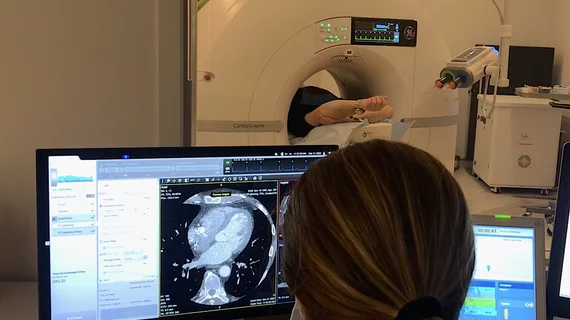Be Mindful of the Stark Law in CCTA Alliances
Numerous radiology groups are currently discussing arrangements whereby cardiologists and the radiologists would essentially split the responsibilities for reading coronary CT angiography (CCTA) studies. Most commonly, as proposed, the cardiologists would read and generate a signed interpretation report, but limited to the cardiac portion of the CCTA scan. The radiologists would read and generate a signed interpretation report for the non-cardiac portions of the CCTA studies.
The cardiologists would then bill for all of the professional services and compensate the radiologist for their portion of the services pursuant to a professional services agreement. In an effort to protect the parties from potential scrutiny by the local Medicare carrier, some consultants have recommended sending a letter to the local Medicare carrier requesting clarification or approval of the proposed shared reading arrangement. While such contacts with the medical director for approval is prudent and—assuming approval is granted—it could provide the parties with some measure of protection from regulatory scrutiny, such approval does not address or provide any degree of protection to the parties with respect to potential liability under the federal Stark law.
The federal Stark law and its implementing regulations generally prohibit a physician from referring a Medicare patient to an entity in which the physician holds a financial interest for the provision of certain designated health services, including the professional component of diagnostic radiology services.
Cardiologists are generally prohibited from self referrals under the Stark law, but there are exceptions
As a result, a cardiologist is generally prohibited from referring a Medicare patient to his or her own group practice for the provision of and billing for professional interpretations of CCTA studies, unless those referrals qualify for protection under an exception to the Stark law. Specifically, the referrals of Medicare patients for the professional component of CCTA studies must meet the requirements of the “physician services” exception to the Stark law.
This exception states that “physician services” are services that are furnished: (a) Personally by another physician who is a member of the referring physician’s group practice or is a physician in the same group practice as the referring physician; or (b) Under the supervision of another physician who is a member of the referring physician’s group practice or is a physician in the same group practice as the referring physician, provided that the supervision complies with all other applicable Medicare payment and coverage rules for the physician services.”
Under the split read model described above, an independent contractor radiologist will actually perform a portion of the professional services billed by the cardiologist. Thus, in order for the services performed by the radiologist but billed by the cardiologist to qualify for protection under the “physician services” exception, the radiologist must qualify as a “physician in the group practice” as the cardiologist.
Stark law allows radiologist to be a physician in a group practice if under contract
The Stark regulations specify that an independent contractor physician, such as the radiologist, can qualify as a “physician in the group practice” if:
• (1) he or she has a contractual arrangement to provide services to the group’s patients in the group practice’s facilities;
• (2) the contract contains compensation terms that are the same as those that apply to group members under section 1877(h)(4)(iv) of the Act or the contract fits in the personal services exception; and
• (3) the contract complies with the reassignment rules.
Under a shared CCTA interpretation arrangement, the radiologist would be acting as an independent contractor to the cardiologist, but the radiologist would not be reassigning his or her Medicare payment rights to the cardiologist since the cardiologist will not be billing for the services under the radiologist’s name or PIN. As a result, the arrangement would not comply with the Medicare reassignment rules and, consequently, would not qualify for protection under the “physician services” exception to Stark.
It should be noted that the new Category III CCTA codes are designated health services (DHS) for Stark purposes. CMS has confirmed that the new codes are going to be on the DHS list published with the 2007 Medicare Physician Fee Schedule. Consequently, failure to qualify for protection under an exception can expose both the cardiologists and the radiologists to potential liability under the Stark law.
About the author: Tom Greeson, JD, is a member of the Life Sciences Health Industry Group, practicing in the area of healthcare regulatory law. His practice focuses on representing radiologists and diagnostic imaging providers. Previously, he served as general counsel for the American College of Radiology (ACR). He a healthcare regulatory lawyer specializing in radiology and diagnostic imaging and regulatory compliance.
Related Coronary CT Content:
VIDEO: The new role of cardiac CT under the 2021 chest pain evaluation guidelines — Interview with Eric Williamson, MD
VIDEO: Cardiac CT now recommended as a front-line chest pain assessment tool — Interview with Leslee Shaw, PhD
The CCTA Playbook: A Guide to Coding, Reimbursement and Operations
VIDEO: Office-based cardiac CT and FFR-CT offer a new business model
VIDEO: The new role of cardiac CT in chest pain evaluation — Interview with Brian Ghoshhajra, MD
PHOTO GALLERY: Cardiac CT advances at SCCT 2022

